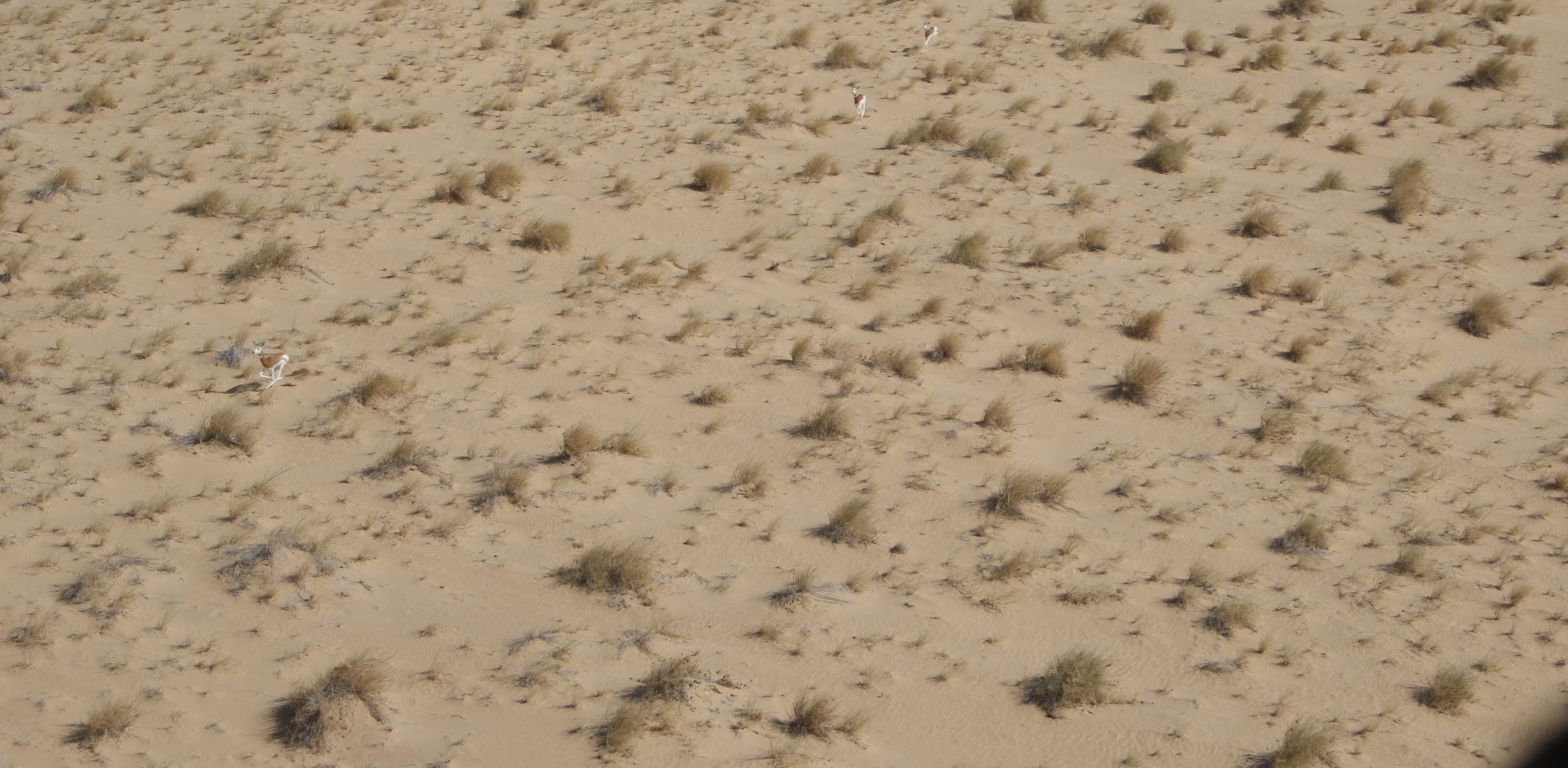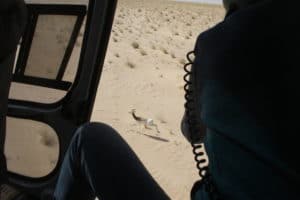Dama gazelles: achieving a major conservation goal
In one of the most ambitious and challenging missions it has ever undertaken, the Sahara Conservation Fund led an international team in the safe and successful capture and translocation of three Critically Endangered dama gazelles from western Chad to holding facilities in the centre of the country.

The operation, which took place in January with strong support from the Chadian authorities, was carried out using ground, light aircraft and helicopter support. The team carrying out this vitally important initiative was made up from staff of Chad’s Wildlife Service, the Environment Agency Abu Dhabi, the Zoological Society of London, Fossil Rim Wildlife Center, the Smithsonian Conservation Biology Institute, Gulf Breeze Zoo, and Noé Conservation. Capturing individuals from the Manga population was also the highest priority under the Dama Gazelle Conservation Strategy 2019-2028 (Al Ain Zoo, IUCN/SSC ASG & RZSS, 2019). SCF is extremely grateful also to the Fondation Segré, Rewild, and the Zoological Society of London for their support.

Veterinarians, Charlotte Moueix (DVM, MSc.) and Julie Swenson (DVM, Dipl. ACZM), and handling team Adam Eyres (Fossil Rim Wildlife Center), Justin Chuven and Ricardo Pusey (Environment Agency – Abu Dhabi), played a determining role in capturing the gazelles by darting them from the helicopter and then assuring their safety during transport by plane, helicopter, and finally moving them to their new home’s fence in the Ouadi Rimé-Ouadi Achim Game Reserve.
The tiny western Chad population of dama gazelles, thought to number less than twenty, is undoubtedly the most at risk of extinction from poaching and habitat loss. Saving animals from this genetically rich group is seen as a major priority in strategies to improve the species’ status. Since all the gazelles initially captured were females, a fine male from the central Chad population was also darted and brought into captivity to form a small breeding group.
In thanking all its partners, SCF also extends its gratitude to SVS-Tchad, Mission Aviation Fellowship and Tropic Air Kenya for the pilots and logistical support without which this mission would not have been possible.


